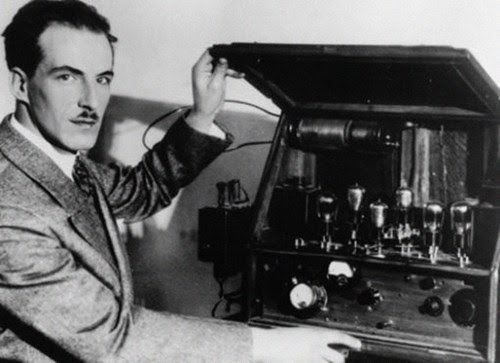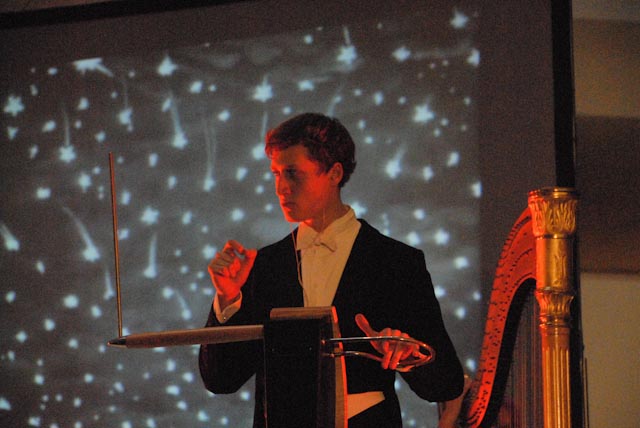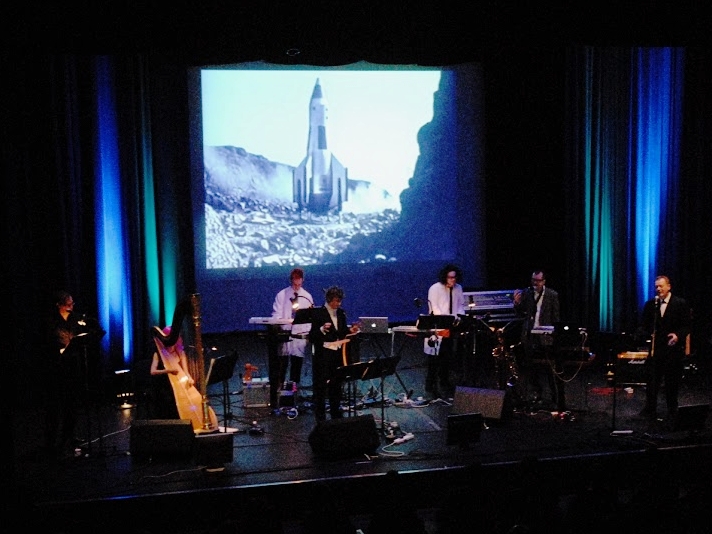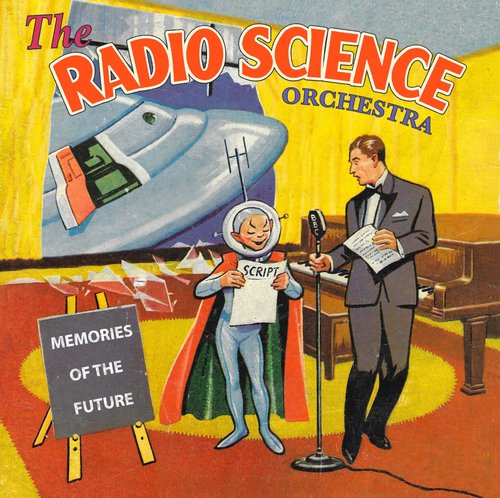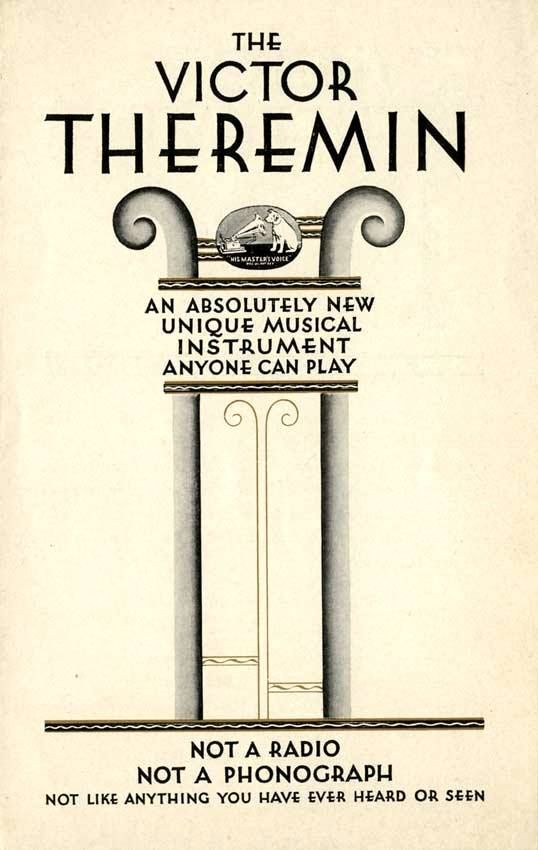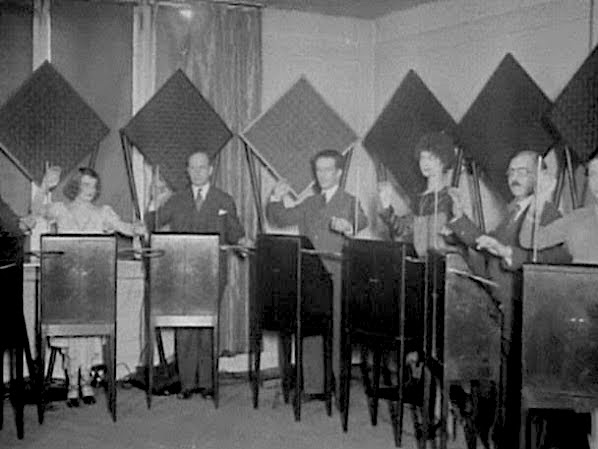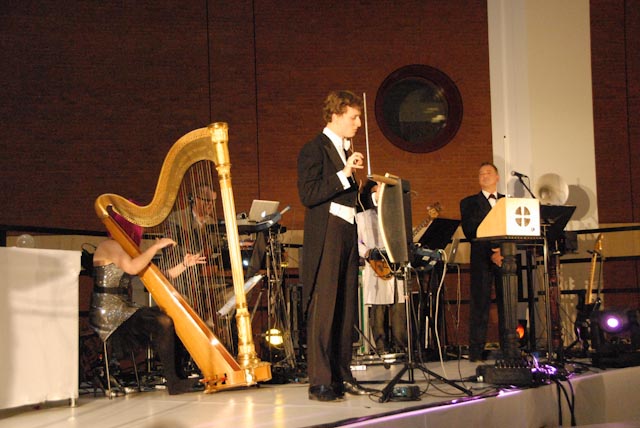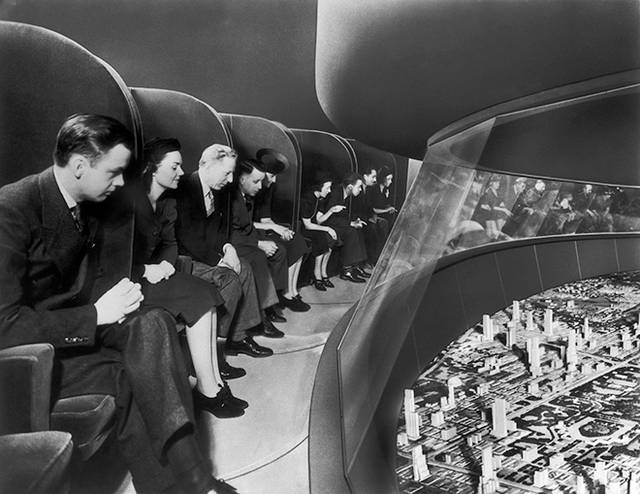The Radio Science Orchestra presents
Theremin 100
Celebrating a Century of Electronic Music
To celebrate the the centenary of the invention of the theremin, the world’s first successful electronic musical instrument, the Radio Science Orchestra presents THEREMIN 100: an audio-visual spectacular saluting a century of electronic music.
Theremin 100
Theremin 100 uses a live performance of original and adapted music, IMAX video, 3D sound and narration to chart the remarkable story of the world’s first comercially-available electronic musical instrument, the only to be played without physical contact. The 100-year tale of the theremin spans two world wars, struggles between Russia and America, communism and capitalism, idealism and harsh reality. It features cultural icons from Lenin to Led Zeppelin and sees musical instruments transformed into tools of political espionage. Above all, it is the story of one mysterious man, whose visionary creation stirred the world, saw his loyalties divided, and almost cost him his life.
STAGE: theremins, ondes Martenot, Moog and modular synthesizers, VCS3, concert harp, saxophones, vocal harmonies, melodica, keyboard, electric guitar, bass, percussion, Illumovox, Orb, Atomium and RCA Theremin.
REPERTOIRE: spanning space-age pop, Claude Debussy, Kraftwerk, Barry Gray, Henry Purcell, Ron Grainer and original RSO compositions.
VISION: archival footage, avatar narrator, steam-powered gramophone, Sci-Fi, vintage advertising, public information films, “Memories of the Future”
STORY:
Music from the Ether
In 1919, Russian radio engineer, cellist and visionary Leon Theremin, stumbles on the secret of drawing music from the charged air. His invention astonishes scientists and concert-goers alike. Lenin summons Theremin to the Kremlin for a private demonstration. Convinced of the instrument's potential to project Soviet power and transform the country's flagging economy, the Soviet government sends Theremin on a state-sanctioned world tour; he astounds the audiences of Paris, Cologne, Berlin and London; he crosses paths with Albert Einstein, Sergei Rachmaninoff, George Gershwin, Maurice Martenot and George Bernard Shaw; newspapers excitedly prophesy the extinction of the orchestral; electricity (and music) are in the air.
MOOD: Lenin proclaims “Communism is Soviet Power plus Electrification!”; 19th century classics with a modern twist.
A Theremin in Every Home
Theremin arrives in New York City in 1927 to a storm of paparazzi; the instrument Lenin had hailed as a proletarian triumph captivates capitalist America. Theremin sets up a lab in Manhattan, and secures a staggering $100,000 contract with the Radio Corporation of America. Advertisements acclaim the 1929 RCA Theremin as "the easiest of all instruments to play". Only 500 instruments are produced and the venture is a financial disaster. Theremin's creative endeavours continue with experiments in television, defensive systems for Alcatraz, and an entire orchestra of electronic instruments at Carnegie Hall.
Despite this, his financial and social affairs end in tatters: creditors snap at his heels, his marriage to the black dancer Lavinia Williams sees him publicly ostracised, and he is increasingly suspected of espionage. In September 1938, Leon Theremin disappears. No-one is told of his departure; Lavinia assumes he has been kidnapped by Stalin's brutal agents.
MOOD: Jazz age meets Electronics and the beat of the Rhythmicon; an entire orchestra of electronic instruments
Cosmic Tones - From Science to Sci-Fi
Isolated from their inventor, surviving theremins from RCA's limited production run quickly find a new role: their ghostly wailings became the leitmotif for psychological thrillers and the rapidly-expanding genre of science-fiction: Music out of the Moon, It Came from Outer Space, The Lost Weekend, The Day the Earth Stood Still, Mars Attacks! ... from 1939 onward the theremin gains, unbeknownst to its inventor, an association with the otherworldly which persists to the present day.
MOOD: Space-age exotica; Hi-Fi Sci-Fi; "klaatu barada niktu!" Kenneth Arnold, flying saucers attack; "by 1979 man will have colonised the moon…”
Imprisonment and Espionage
Clara Rockmore had been Theremin's star pupil in the 30s. Holidaying in Moscow in 1962, she furtively asks a guest about the inventor who was her lifelong inspiration, but mysteriously vanished decades ago. "Theremin?" the man replies, "I had lunch with him today"; Clara's heart leaps, and the next day she meets the professor on the rumbling lines of the Moscow city line. Theremin, glancing about at invisible spies as he speaks, tells Clara that he was kidnapped, and taken to Kolyma Internment Camp in the furthest reaches of Siberia. His convictions had been fabricated, his confession elicited under torture. He was sent there to die.
Knowing his life was in danger, Leon had secretly begun work on a project that he knew would guarantee his survival. This was no tunnel or escape route, but a spying device so powerful and brilliant in its conception that it could not be ignored – requiring no electricity, and practically undetectable. Unveiling his device after years of labour, Theremin was presented with the Stalin Prize, the highest state honour.
He was finally freed. With communism collapsing behind him, Leon Theremin left Russia, for one last world tour.
MOOD: neoclassical reflections; lost decades blur into the Siberian snow
Ode to an Electronic Future
In 1991, Leon Theremin returns to America. For the 95 year-old inventor, it is an almost hallucinatory experience. Reunited with his Clara, he wanders the kaleidoscopic metropolis in open-eyed amazement. Standing in the roaring hubbub of Times Square, the American altar to electronic glitz, he struggles to hold back tears. Music halls are filled with the sounds of electronic orchestras, drum machines, synthesizers, and electronic pianos; doors swing open without touch...
MOOD: Interconnected marvel of sound, light, and technology - celebrating Leon - the architect of a future that has finally arrived.
“The theremin specifically, and Leon Theremin’s work in general is the biggest, fattest, most important cornerstone of the whole electronic music medium. That’s where it all began”
Leon Theremin demonstrates his invention in London, 1927
“We must advertise this instrument in every possible way. We have to show it to the whole country.”
Summertime - The Radio Science Orchestra
“Leon Theremin has touched the lives of countless musicians and scientists, and his work is a vital cornerstone of our contemporary music technology... [he] has been my hero and mentor for most of my life”
“‘Memories Of The Future is a brave and highly idiosyncratic undertaking ... combining the information-rich commentary .... the music of The Radio Science Orchestra and a dense visual narrative, they manage to execute their concept with considerable panache and charm.”
“Without his instrument there could have been no synthesizer, no possibility for infinite combinations of sound with electricity.”
“By the end of ‘Born Under Sputnik’ . . . . The RSO have achieved something very intriguing. We are no longer calculating or measuring the interaction between the narrative and the music, but are fully absorbed into the newsreel of our memories of the future.”
References
Andy Baron & Mike Buffington, RCATheremin.com (2018)
Albert Glinsky, Theremin: Ether Music and Espionage (2000)
Andrei Smirnov, Sound in Z: Experiments in Sound and Electronic Music in Early 20th Century Russia (2013)
Aleksandr Solzhenitsyn, The Gulag Archipelago (1973/4)
